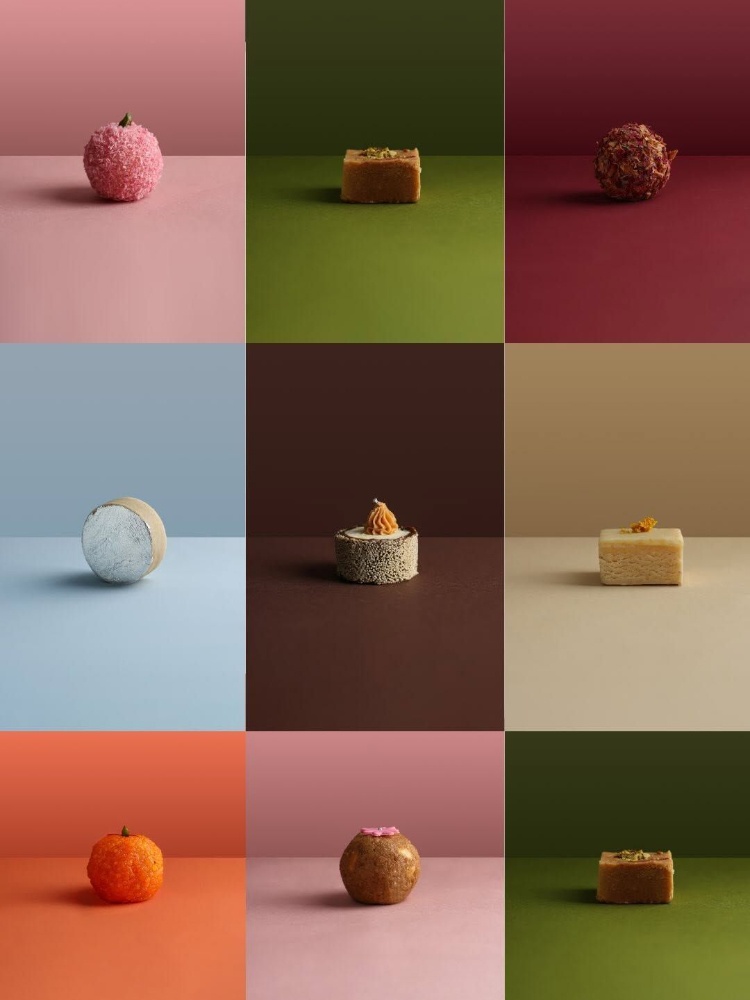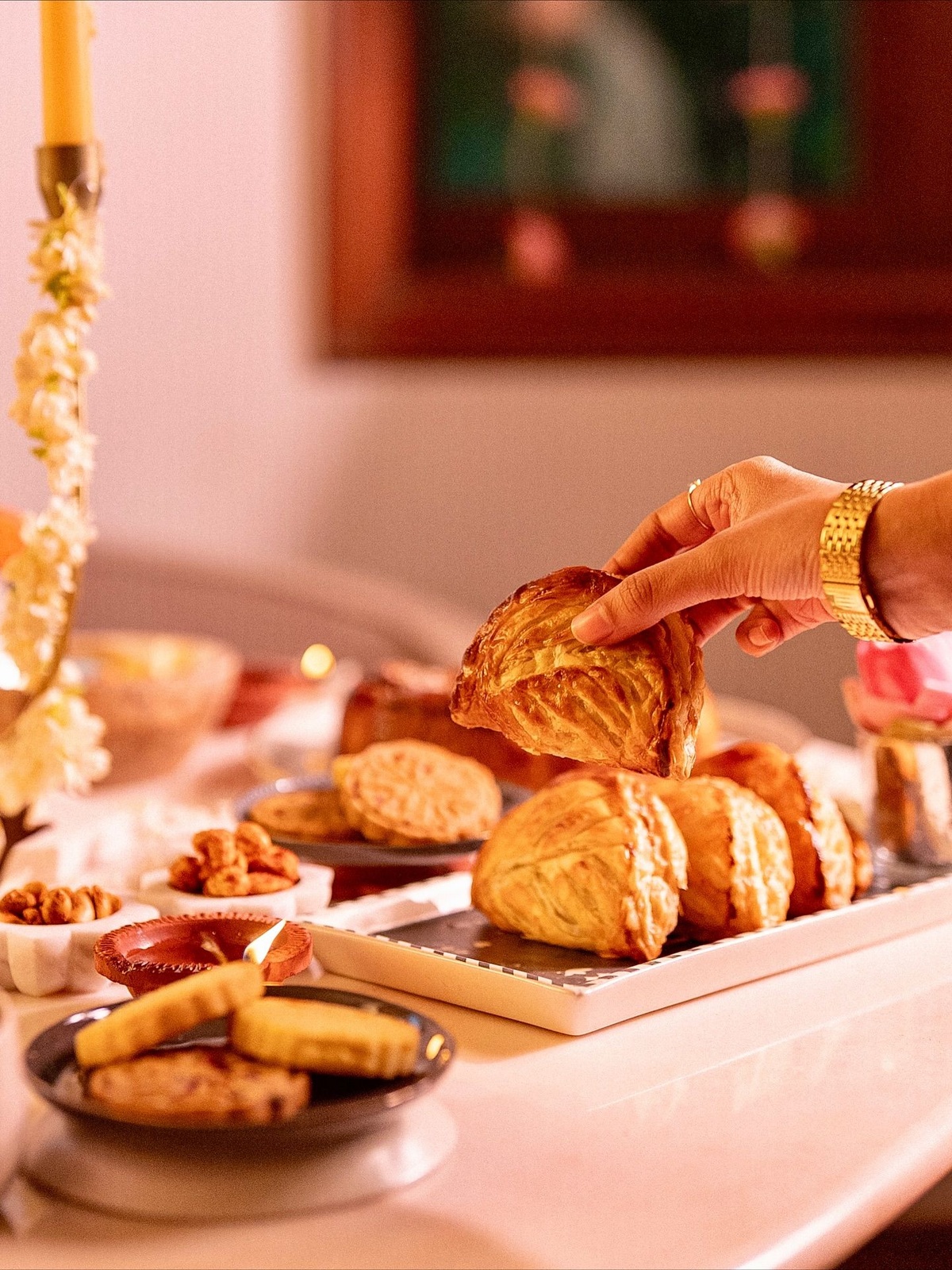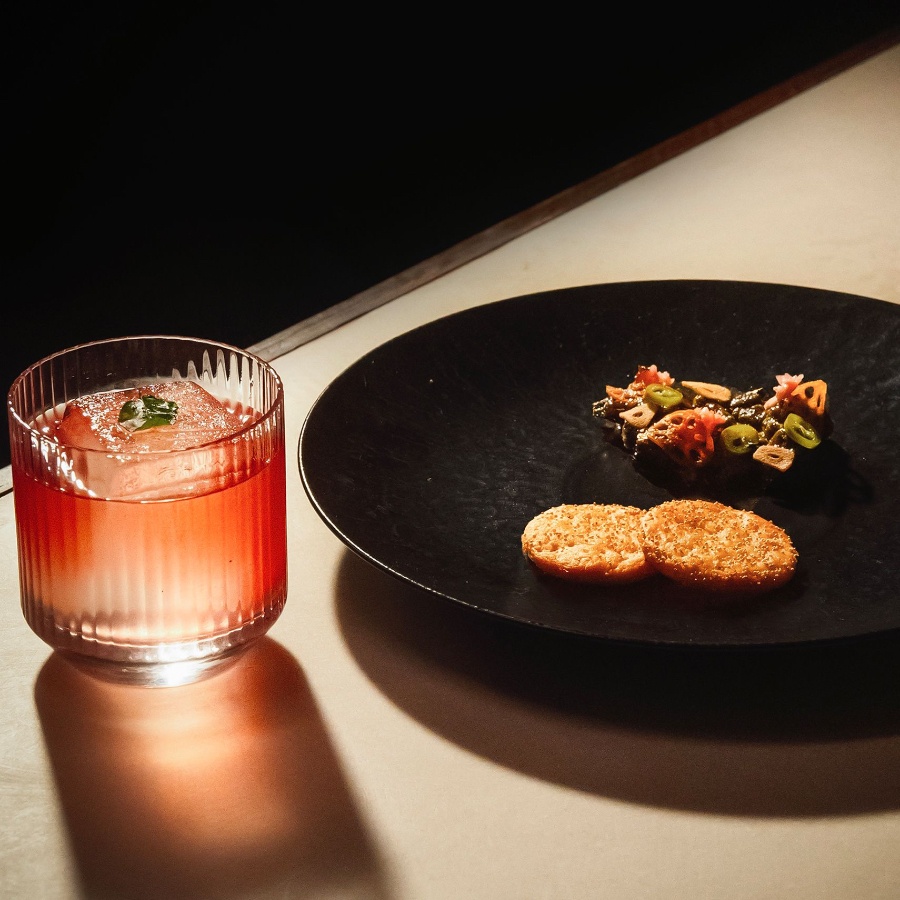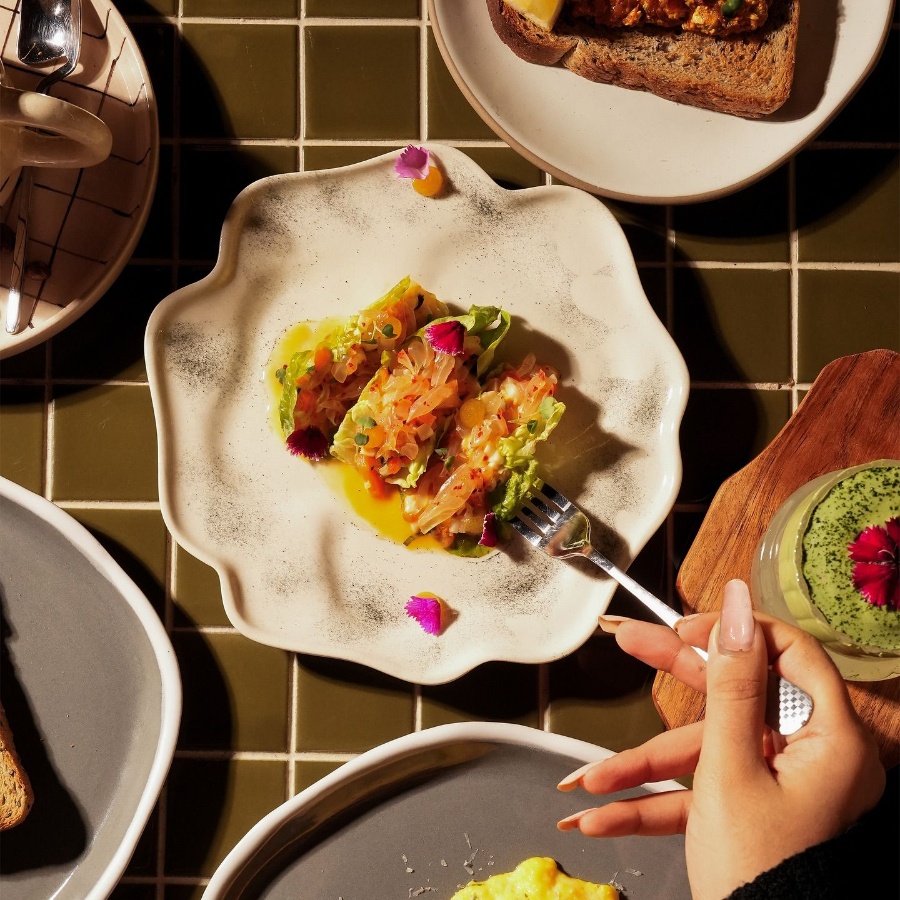Once upon a time, Diwali was about discovering the newest pataka on the block: the bomb that fizzles and flies, the flowerpot that sparkles metallic... you know the works. Today, this innovation has shifted from crackers and landed straight into mithai. The puja thaali no longer features run-of-the-mill kaju katli or boondi ka laddoo; the selection is between Bombay Sweet Shop’s Biscoff Mathura peda and jalebi waffle.
In fact, there’s no dearth of whacky flavours: Mumbai’s artisanal patisserie Toujours has a motichoor cheesecake tart and New Delhi-based fusion food restaurant Bhawan is zhuzhing up your nani’s namakpare with Flaming Hot Cheetos.
Clearly, traditional Indian mithai and celebrations are now being reimagined, so much so that old-school favourites are being sorely missed. “I just want to go back to festivals where matcha isn’t mentioned. Maybe these sweets look cool online but genuinely, who tf is choosing a coffee rasgulla cake mish mash over actual mithai? Make me meet them,” grumbles Bengaluru-based Ishaan Trehan. And something tells us he’s not alone when it comes to questioning the legitimacy of matcha cham cham and 54 per cent dark chocolate modaks.
Well, you naysayers may be surprised, but the out-of-the-box takes on trad sweets thrive because they fulfil more desires than just flavour.
When Mumbai-based Manisha Naik decided to throw a Diwali party, the primary criterion was to build intrigue. “Today, people’s calendars are booked with Diwali gatherings, but I want mine to start conversations,” says the 29-year-old product manager. One way she plans to achieve this is by serving modern iterations of traditional festive food.













